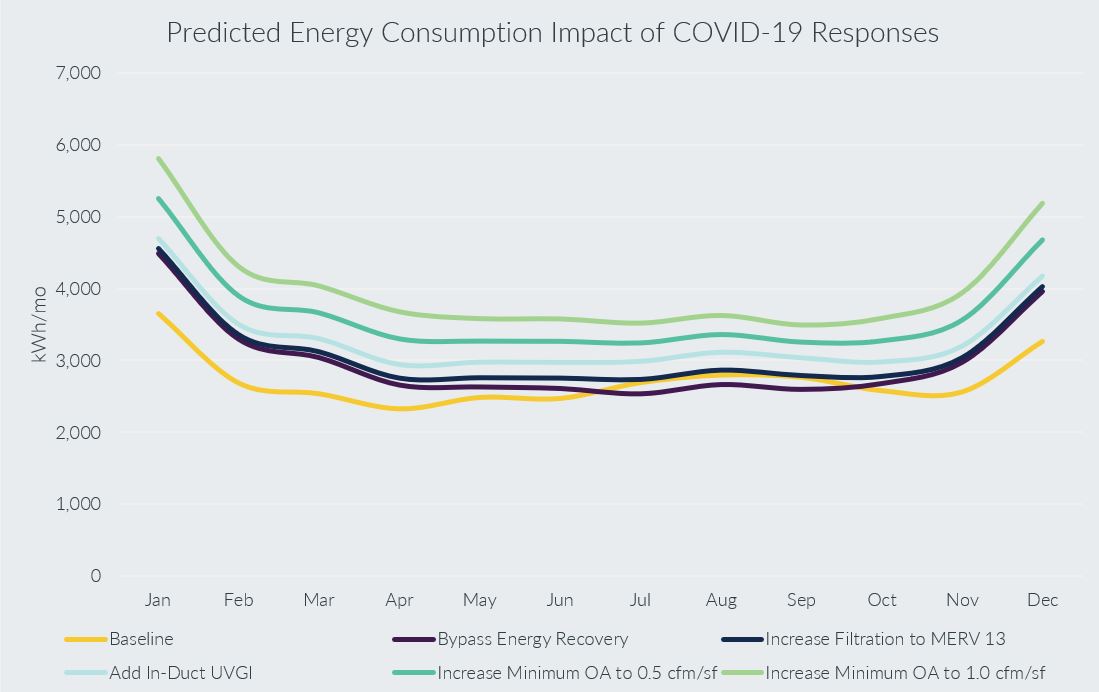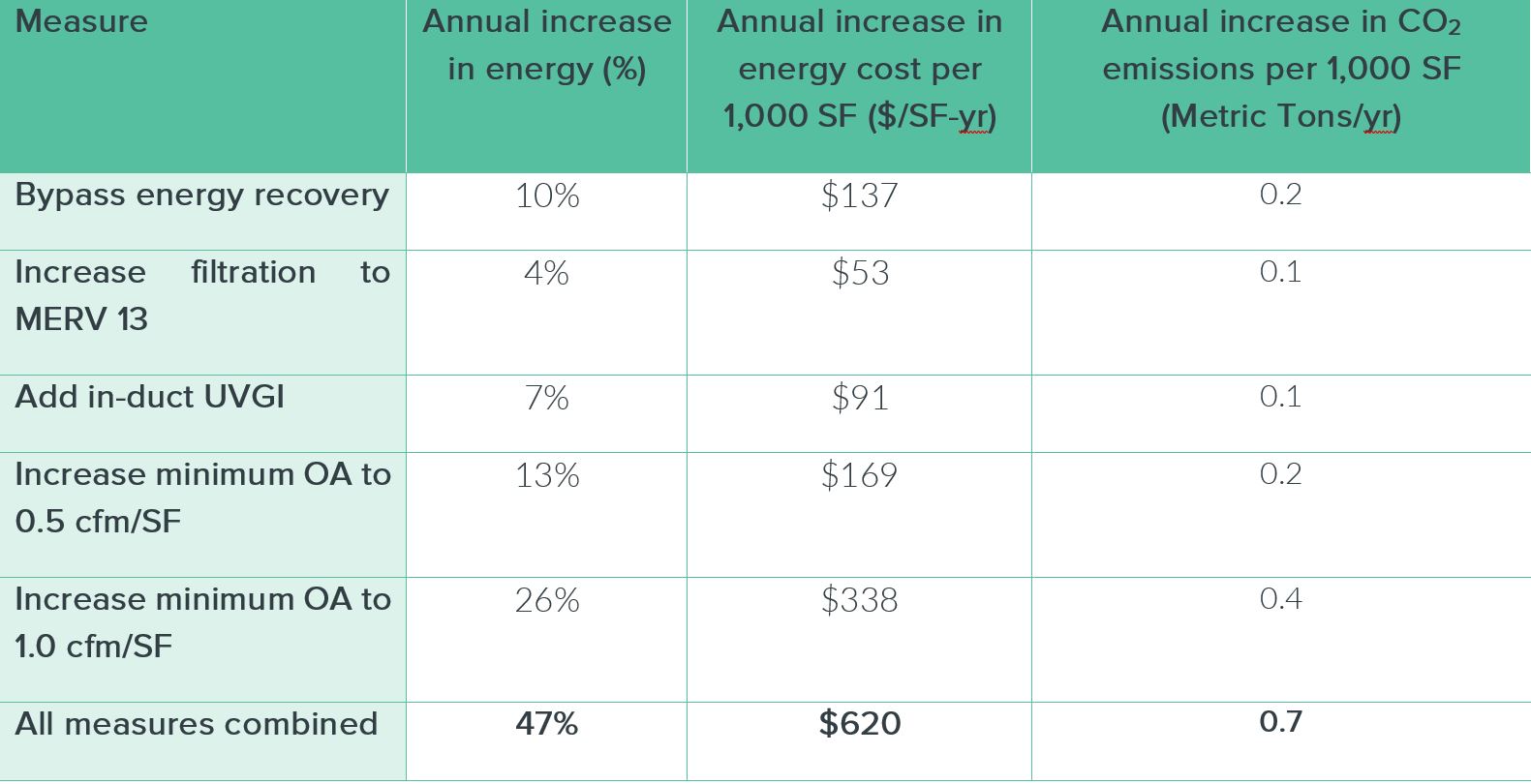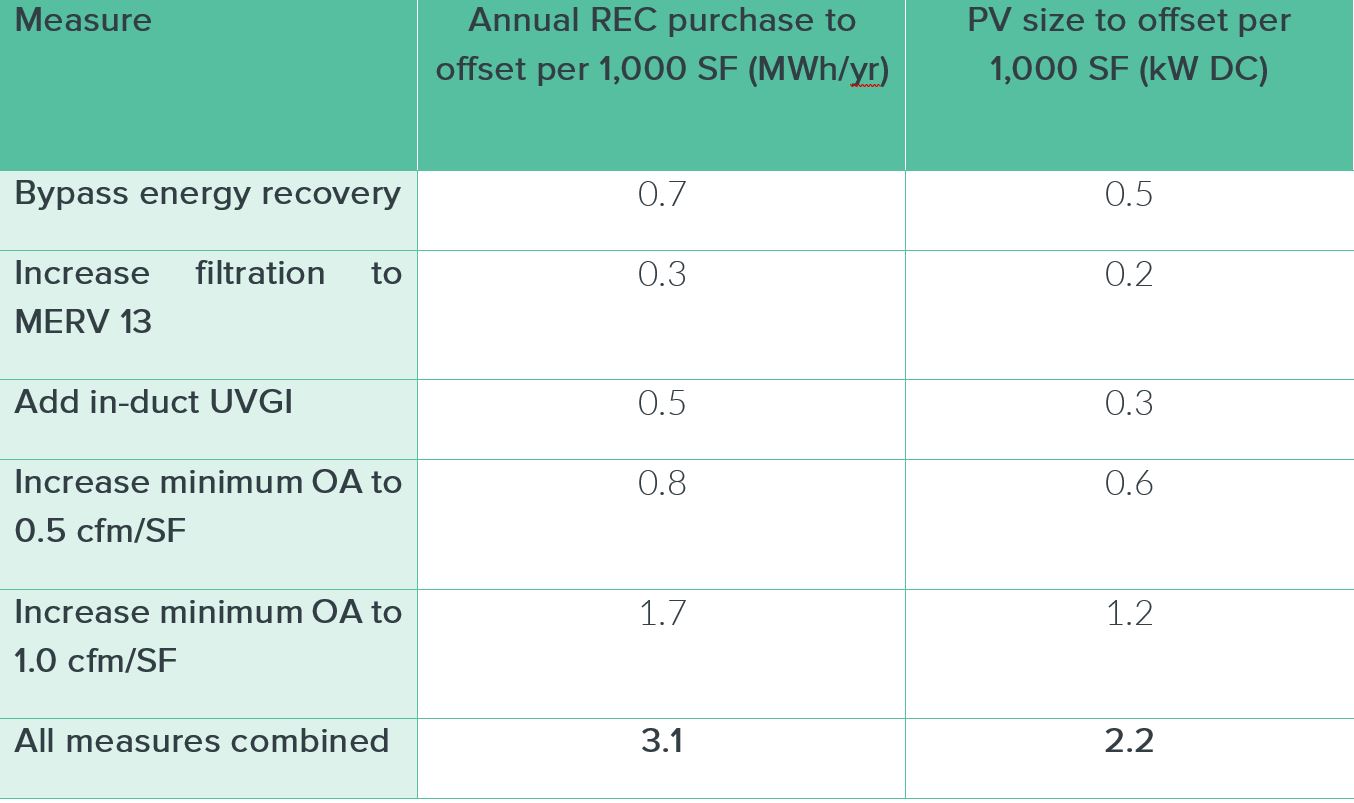Building owners, operators, and tenants are all wondering what changes must be made to their buildings to reduce the risk of transmission of viruses like SARS-COV-2 as the U.S. and countries around the world prepare to reopen workplaces and reoccupy offices and other buildings. ASHRAE has issued a Position Document on recommended practices for controlling the spread of infectious diseases and decreasing disease risk as we get back to our workplaces.
As our industry dives deeper into designing and operating workplaces to protect occupant health, we can’t lose sight of another global public health crisis that buildings play an undeniable role in: climate change.
To tie these two crises together through the built environment, Stok’s engineering team has quantified the energy and environmental—and associated financial—impact of some of the recommended practices for mitigating the spread of coronavirus, as well as what steps building owners and tenants can take to help offset this increased energy impact.
FINANCIAL AND ENVIRONMENTAL IMPACT OF COVID-19 WORKPLACE UPDATES
We used EnergyPlus software to create a whole building energy model of an office space in San Francisco assuming baseline features that are consistent with an office building built in the last five to 10 years:
• All-electric fuel with a variable air volume (VAV) reheat system with economizer
• Energy recovery system
• MERV 8 filtration
• No UV treatment
• Minimum outdoor air (OA) set at 0.2 cfm/SF

We investigated four measures from ASHRAE’s Position Document for non-healthcare spaces that we prioritized in this ‘return to work’ checklist to understand their energy impact:
• Bypass energy recovery ventilation systems that leak potentially contaminated exhaust air back into the outdoor air supply
• Increase outdoor air ventilation (disable demand-controlled ventilation and open outdoor air dampers to 100% as indoor and outdoor conditions permit)
• Improve central air and other HVAC filtration to MERV 13
• Add in-duct UVGI devices to air handling units

The following table shows the resulting measure-by-measure increase in energy consumption for the whole building, along with an estimate of increased energy cost (assuming $0.20/kWh blended rate) and increased carbon emissions per 1,000 SF of building area. For example, increasing filtration in a 100,000 SF office building from MERV 8 to MERV 13 is expected to increase energy use by 4 percent overall, add $5,300 per year to the utility bill, and increase emissions by 10 metric tons per year.

If all these measures are applied, the energy model predicts an increase in energy consumption of nearly 50 percent, more than half of which is due to a large increase in outdoor air volume. It also predicts increased annual energy costs of $620 per year per 1,000 SF of building area and increased carbon emissions of 0.7 metric tons per year per 1,000 SF of building area.
OFFSETTING ENVIRONMENTAL IMPACT OF COVID-19 WORKPLACE UPDATES
So other than the inconvenience of a higher utility bill and potentially missed corporate sustainability targets this year, why does this matter? Unchecked, this increase in energy consumption and related emissions will directly contribute to climate change. And a recent article in ProPublica makes the connection between the impacts of climate change and the risk of pandemics, stating that “ignoring the connection between climate change and pandemics would be “dangerous delusion””.
In response, we’ve quantified how to mitigate these increased carbon impacts. To do this, we associated each COVID-19 workplace measure with some related actions that would neutralize the increase in energy consumption. Though this is a basic study simply showing the amount of renewable energy certificates (RECs) that would need to be purchased or the size of PV system that would offset the increases in energy consumption, the larger takeaway is that we are obligated to find solutions to reduce our environmental impact while still protecting the health and well-being of our building occupants.
The following table shows the same measures described above and two associated mitigation measures for each:
• Amount of RECs that would need to be purchased to cover the increase in energy consumption (in MWh/yr per 1,000 SF of building)
• Size of PV system that would need to be installed to directly offset the increase (in kW DC per 1,000 SF of building)
Using the same example from above, a 100,000 SF office building in San Francisco that increases filtration from MERV 8 to MERV 13 would need to buy 30 MWh of RECs per year. Alternatively, a long term solution would be to install a 20 kW PV system.

Of course, the offset strategies listed above are not your only options. Other solutions include:
• Perform an energy audit to find opportunities for energy reductions
• Retro-commission your building to ensure it is operating as designed and not unnecessarily wasting energy
• Undergo a deep energy retrofit
Whether you’re ready to make and offset changes to your workplace or not sure where to start, we’re here to help. Whatever your circumstance, it is critical to ensure your building is safe for occupants to return to as economies begin to reopen and to prepare for the short and long term financial and environmental impacts of these necessary health protections. To discuss how to prepare your workplace for the ‘return to work’ and how to offset these changes, please reach out to our team!




